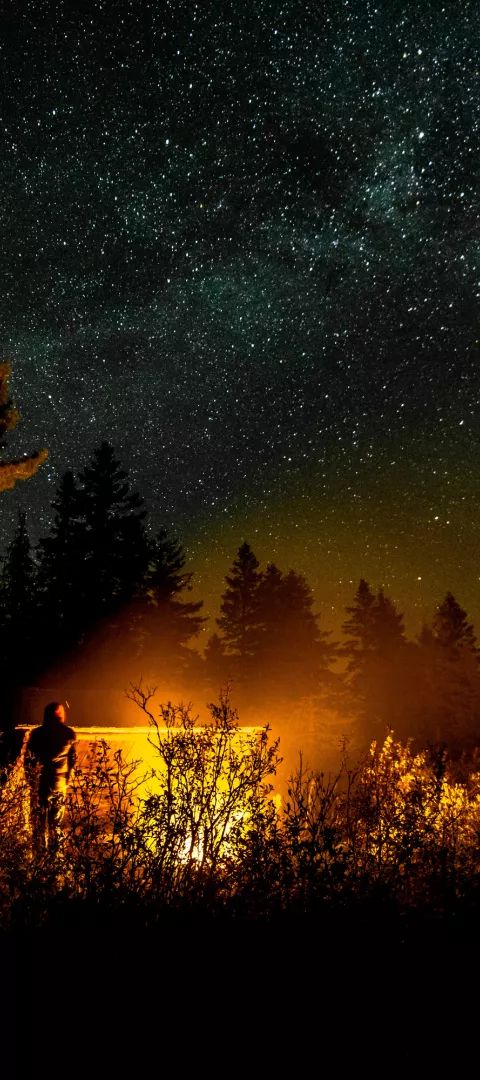
Everything You Need to Know About Camping in Minnesota
Everything You Need to Know About Camping in Minnesota
By Aaron Shaffer
The dramatic call of a loon. A crisp summer night with the northern lights shimmering overhead. A rainbow over a lake at sunset. Conversations around a roaring fire. That’s camping in Minnesota, whether you drive right up to your favorite site or carry everything in on a canoe or backpack.
Want to make the most of camping Minnesota? Let’s discuss.
WHAT KIND OF CAMPING DOES MINNESOTA OFFER?

North Shore Camping Co
Minnesota has it all. You can “rough it” in whatever way appeals most to you, be it backpacking, canoe expeditions, car camping, cart-in camping, rental cabins, or glamping in canvas tents.
Here are a few quick definitions you'll need to know:
Backpacking
Carrying your food, water, and gear for the entirety of your journey on foot.
Canoe Expeditions
Carrying your food, water, and gear by canoe and with possible occasional portages (carrying it all from one point of water to another).

Credit: Cuyuna Cove
Canvas Tent Camping
This is closer to car camping, but requires no tent. In some cases (see: True North Basecamp’s canvas tents), this can include a twin bed, so you only need to bring your own bedding.
Car Camping
Pulling up to a designated camping spot with your car, with minimal carrying of gear needed.
Cart-in Camping
A hybrid of car camping and backpacking, where you use a cart to move gear from your car to wherever your camping spot is located (e.g., cart-in camping at Split Rock Lighthouse State Park).

Wildhaven Yurt / CC Boyle
Dispersed Camping
Camping on public lands outside of a designated campsite or campground, with very few or no amenities like bathrooms, sinks, etc.
Rental Cabins
These are frequently seen at state parks, and range from very primitive (no heat or running water) to something closer to a small house.
Yurt Camping
Yurts are circular structures that resemble tents, and give you ample headroom while holding larger groups of people.
WHAT TIME OF YEAR IS BEST FOR CAMPING IN MINNESOTA?
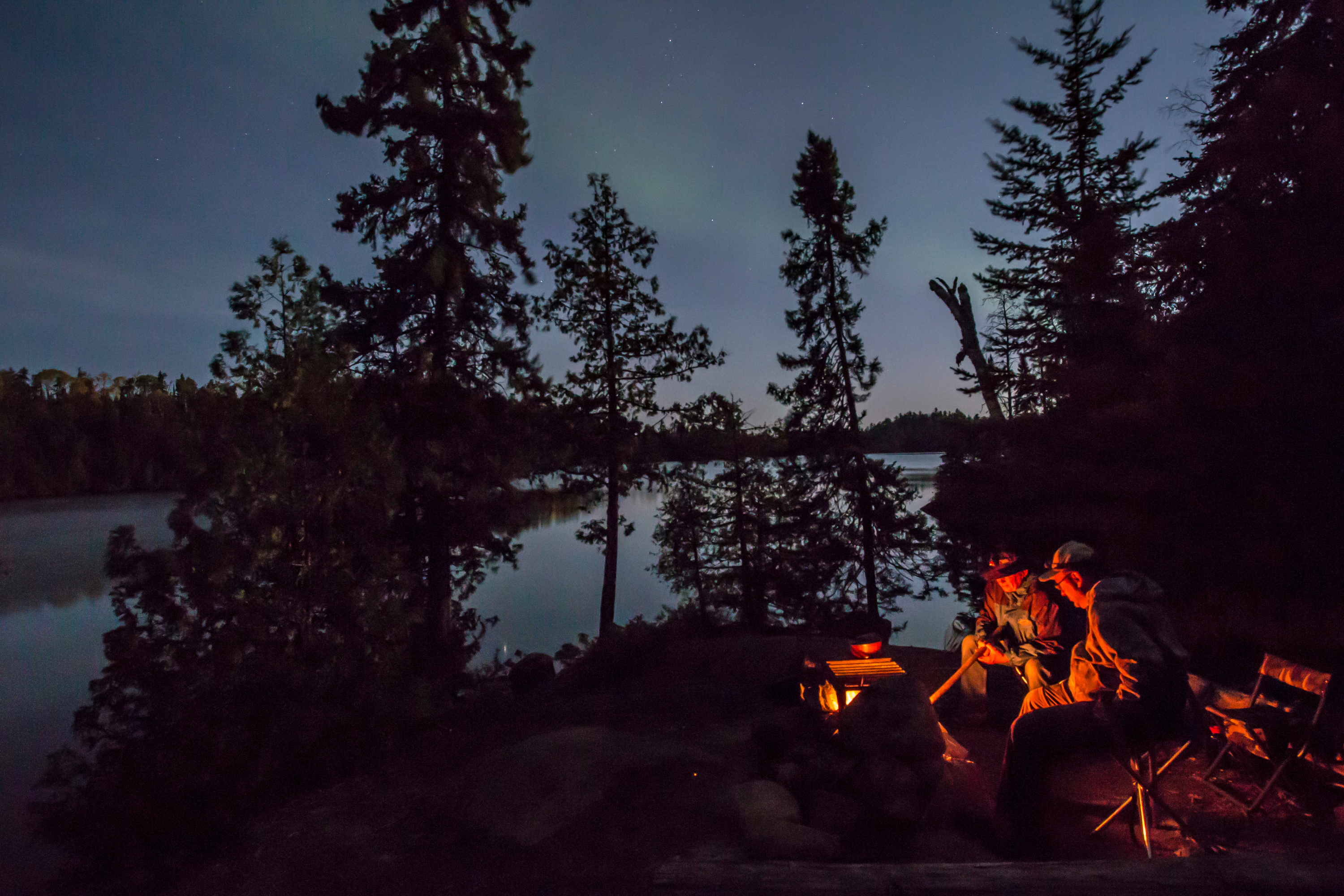
An evening campfire in the Boundary Waters as the northern lights glimmer above / Gary Hamer
Any season is great, depending on your tolerance for cold, heat, and bugs. Winter camping requires special gear to keep warm, and mid-summer heat can keep some people home, but most campers agree that the August to September timeframe is preferable due to its downswing in bugs. For example, mid-July to early-August is often the most visited time of year in the Boundary Waters Canoe Area Wilderness.
Overall, Minnesota’s buggy season tends to last from late May to mid-late August. It can be mitigated by bringing long-sleeved shirts, gloves, pants, and a bug net.
WHAT IS WINTER CAMPING LIKE?

Winter camping in Ely / Credit: Ely Area Tourism Bureau
Winter camping in Minnesota can be cold, but there are different levels of what that means. It might be a sunny day in March with highs in the mid-30s and abundant sunshine through 7 p.m., or it might be a cold January with temperatures barely reaching 0 degrees and sunset around 5 p.m.
Some common barriers to winter camping include staying warm, keeping water and food unfrozen, and keeping yourself busy if darkness looms for more than half the day. Those who enjoy the challenge of winter camping tend to really enjoy it, so if you’re interested but have never gone, we recommend talking to someone experienced for advice — either a friend or outfitter.
WHAT SHOULD I PACK FOR CAR CAMPING?
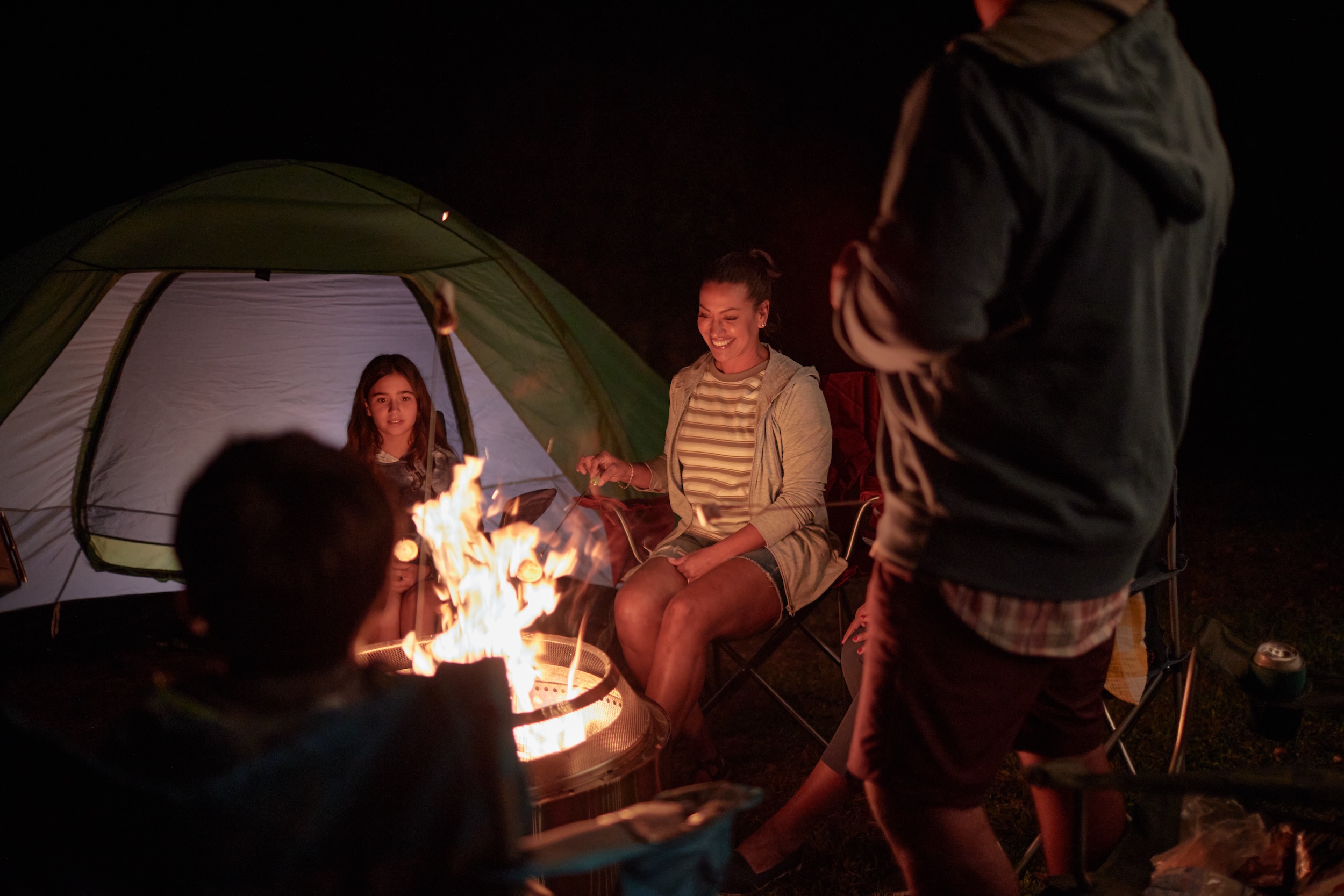
A family gathers around a campfire at William O'Brien State Park / Credit: Paul Vincent
Car camping has one major perk compared to all other forms of camping: you can bring all the comfortable gear and cooking supplies you might want — no matter how heavy — and have it immediately at your disposal. Have a 10-pound camping chair that’s super comfy? Bring it. Have a giant cooler that keeps food cold for a week? Bring it.
Must-haves for car camping include:
- Cooler packed with ice to preserve food and keep drinks cold
- Large tent
- Comfy camp chair
- Blow-up mattresses — one twin-sized per person — for better sleep
- Blankets to stay cozy around camp
- A camp set for cooking, grilling, and making coffee
- Refillable water containers
- Lighters to get a campfire going
Maybe-haves for car camping include a bug net tent and recreational options like an inflatable stand-up paddle board, kayak or floaties if you’re near a lake.
SHOULD I RESERVE A CAMPSITE IN ADVANCE?

East Devil Track campsite on the SHT / John Schwager, courtesy of the Superior Hiking Trail Association
For many Minnesotans, camping at a certain site every year is a tradition. For that reason, reserving a campsite is recommended where possible.
If you’re planning a last-minute trip, consider camping on the Superior Hiking Trail or at a dispersed site in a national forest to ensure you can find your outdoor escape.
If you’re looking for reservations, the Minnesota State Parks system has a helpful system online that’ll allow you to book a specific campsite or cabin.
WHAT ARE BACKPACKING AND CANOE CAMPING LIKE?
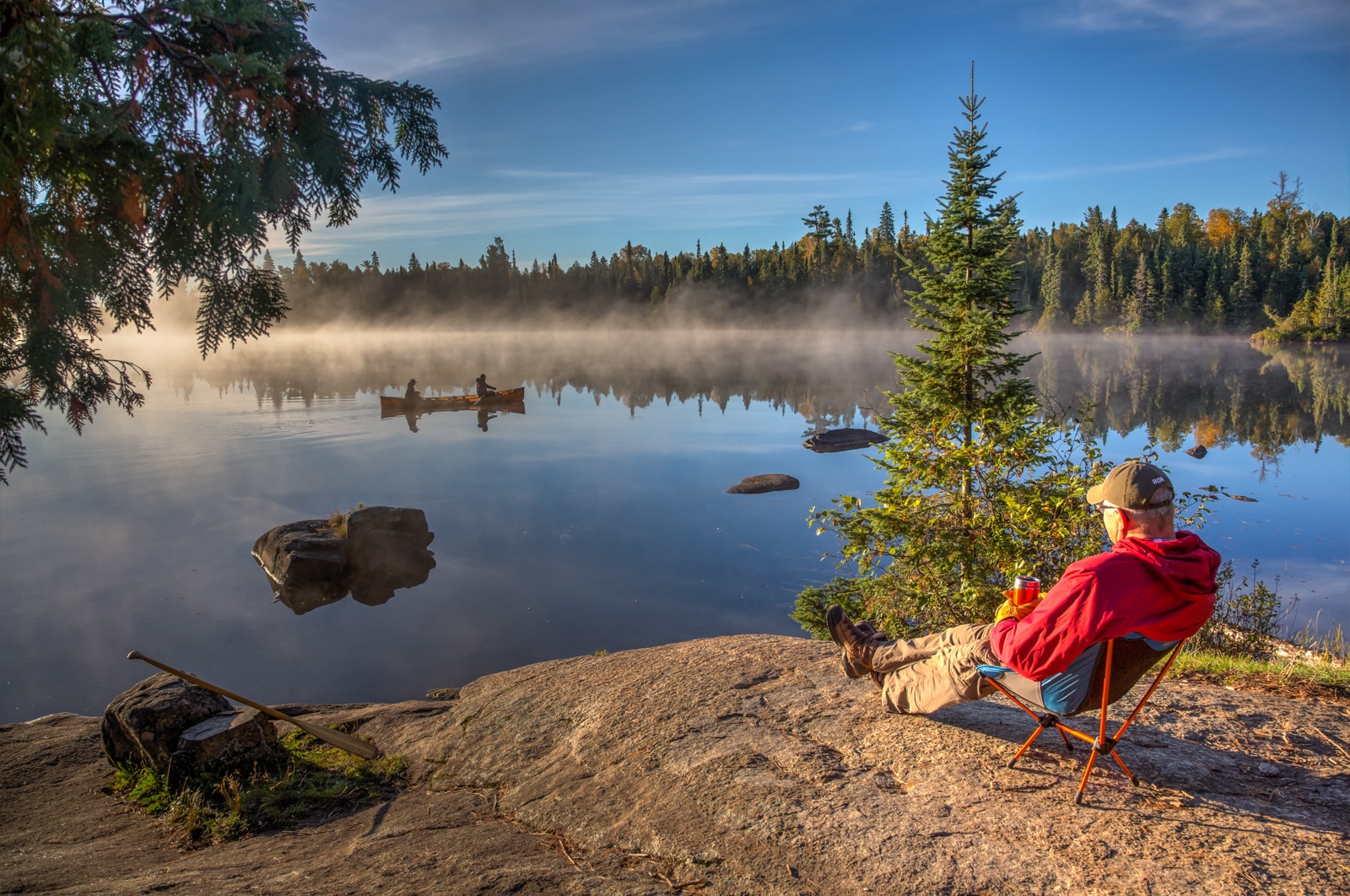
Camping and canoeing in the Boundary Waters / Credit: Gary Hamer
Backpacking and canoe trips take camping to another level — a level not everyone is comfortable with. They’re quite a bit different from car camping because you must carry all your gear for every mile you travel, so you’ll need to pack lighter.
What does that mean? It means finding the lightest-weight tent you can and cutting out a camp chair or purchasing an ultra-light chair, among other things.
What should I pack for a backpacking trip?

Backpacking at Lake Maria State Park
If you already have the gear, backpacking can be one of the quickest and easiest ways to embrace the wilderness in Minnesota, either via a state park, the Superior Hiking Trail, or the Boundary Waters. For example, permits aren’t required on the Superior Hiking Trail, so you can make impromptu decisions at a trailhead. Permits are required in the Boundary Waters, but they are free between October and April.
Regardless of where or how you’re planning to go backpacking, sharing your route with loved ones and/or friends is important. Consider bringing a satellite SOS device with you, just in case, or a phone that is a late-model phone capable of sending satellite messages.
When packing for a backpacking trip, it’s important to bring the lightest gear you can. Often ultralight gear can be more expensive than “standard, light” gear, and it can also be more prone to damage – so exercise caution and really do your research.
Plan to bring only necessities, while making sure those necessities include planning for all types of weather possible in the season you’re traveling. For a detailed list of packing suggestions for the Superior Hiking Trail, see this Backpacker list.
WHAT SHOULD I PACK FOR A CANOE TRIP?

A campsite in the Boundary Waters Canoe Area Wilderness
Packing for the Boundary Waters, or a canoe trip in a nearby state park or national forest, is also limited by weight, but it’s more like “luxury backpacking.” You can bring full meals to cook (we recommend one for breakfast, lunch and dinner that is “instant” or can be cooked by simply adding boiling water), slightly heavier gear, and more comfortable options like a hammock to read or hang out in, or flip flops to wear after a dip in the lake.
If you’ve never done it, you’ll want to consult an outfitter. There are many highly recommended ones near Ely and Grand Marais. An outfitter will help you plan your route and gear, and ensure your trip meets your group’s ability level.
For a detailed list of packing suggestions for the Boundary Waters, see this list from Friends of the Boundary Waters.
WHAT ARE THE BEST PLACES TO CAMP IN MINNESOTA?
Regular campers all have their favorite place(s), so this can be very subjective. One might have a majestic sunset view, another might have good fishing. Here are some of our favorites.
BOOK WITH HASTE

A moon shot along the Superior Hiking Trail
Superior Hiking Trail
This is one of Minnesota’s gems, a 300-mile trail full of ups and downs that meanders around and over rivers, creeks, ridges, and more. Permits aren’t needed unless you’re sleeping in a group campground or at a reservation campsite in George H. Crosby Manitou State Park, but you’ll want to research the right gear and food, as well as water availability (and how you’ll filter it) so you’re ready when the time comes.

Camping in the Boundary Waters is an annual tradition for countless families
Boundary Waters Canoe Area Wilderness
With more than 1 million acres of wilderness, including pristine lakes and forests, this wilderness area allows visitors to experience the outdoors in a similar fashion to French Voyageurs from the 1700s (albeit with lighter, more durable technology). If you’ve never done this type of trip, it tends to require more canoe-specific gear, better first aid knowledge, and quite a bit of planning to ensure you get to where you’re going and get back at the end. I recommend reaching out to an outfitter for your first time or going with experienced friends.

A houseboat on Rainy Lake in Voyageurs National Park / Paul Vincent
Voyageurs National Park
Right next door to the Boundary Waters (just west) is Voyageurs National Park, which resembles its neighbor in forests and water clarity, but also allows users to travel by motorboats. Many choose to experience Voyageurs by houseboat, in fact, which allows quite a bit of leeway when it comes to comfort and luxury items.
NORTH SHORE

Split Rock Lighthouse State Park in Two Harbors / Paul Vincent
Split Rock Lighthouse State Park
Split Rock Lighthouse State Park is famous for its cart-in campsites – meaning you can drive to a parking lot, but then you use a cart to bring your gear to your pre-reserved campsite. You’ll be extremely close to Lake Superior, and some sites have extraordinary views. Nearby, but not immediately lake-adjacent, is the newer Shipwreck Creek Campground (also home to a newer mountain biking trial, Split Rock Wilds) which has car camping spots with electricity.

Temperance River State Park / Credit: Buffalo Media Group
Temperance River State Park
Temperance River State Park is a can’t-miss spot to camp and hike on Minnesota’s North Shore. Just southwest of Tofte, you’ll want to plan some time to hike along the Temperance River Gorge, but also to visit the shores of Lake Superior and dip your feet in when you’re done to cool off in the summer.
NORTHERN MINNESOTA

RV camping at the Cut Foot Horse campground in Chippewa National Forest
Chippewa National Forest
Chippewa National Forest is known for the solitude it provides visitors. With dispersed camping, hundreds of lakes (1,300, to be exact), 925 miles of rivers, and access to hiking trails, this is a can’t-miss camping spot if you love nature, but want to avoid the crowds.
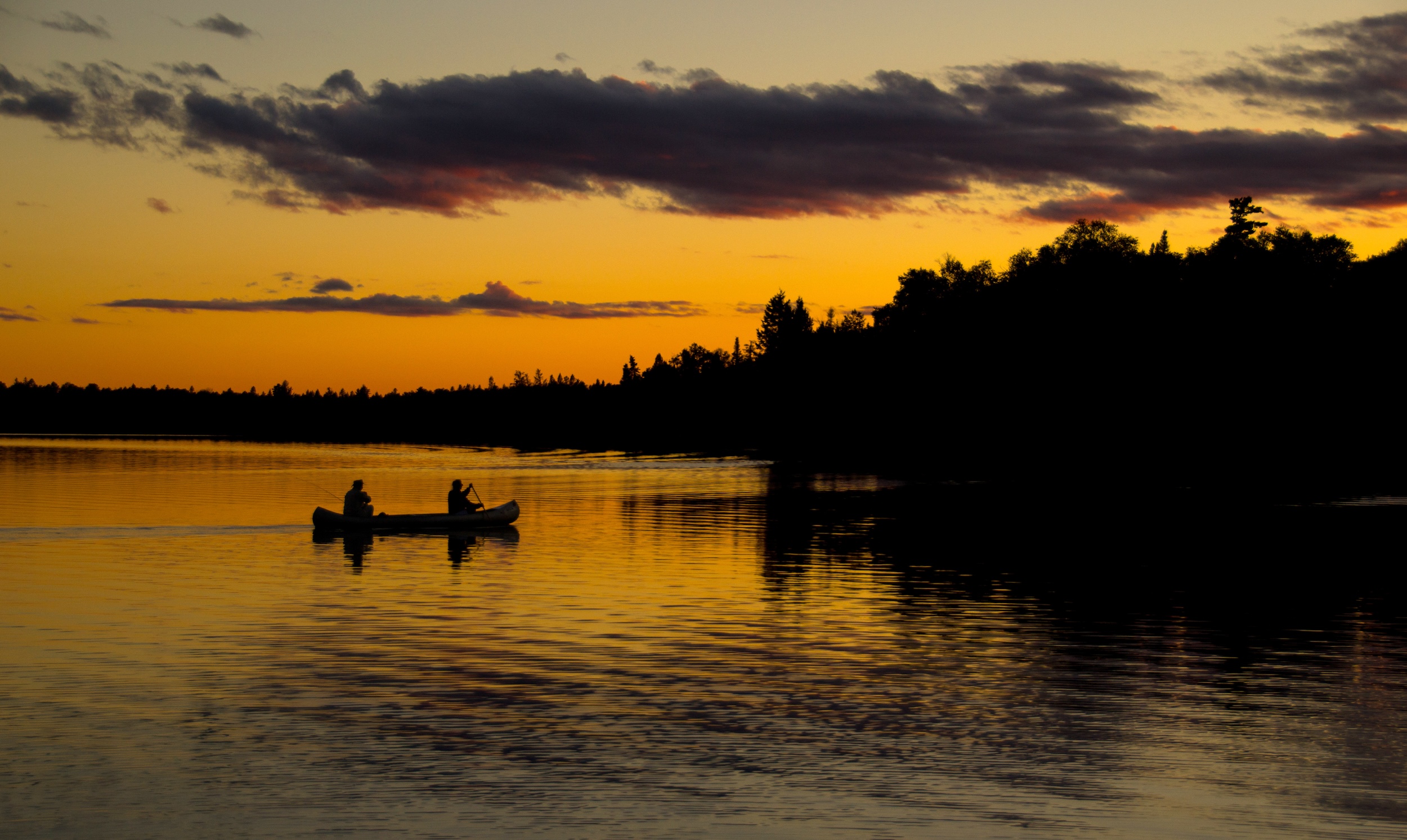
Canoeing in Bear Head Lake State Park / Credit: Matt Stroozas
Bear Head Lake State Park
Located just a little southwest of Ely, visitors to Bear Head Lake State Park will get some of the look and feel of visiting the Boundary Waters, including canoe-ready waterways, but without the added pressure of a BWCA visit. With sites for car camping, but also backing sites and canoe sites, this state park has it all.

Itasca State Park
Itasca State Park is the headwaters of the Mississippi, and provides visitors easy access to hiking and multiple campgrounds, while enabling visitors to see the narrowest section of North America’s largest river.
CENTRAL MINNESOTA
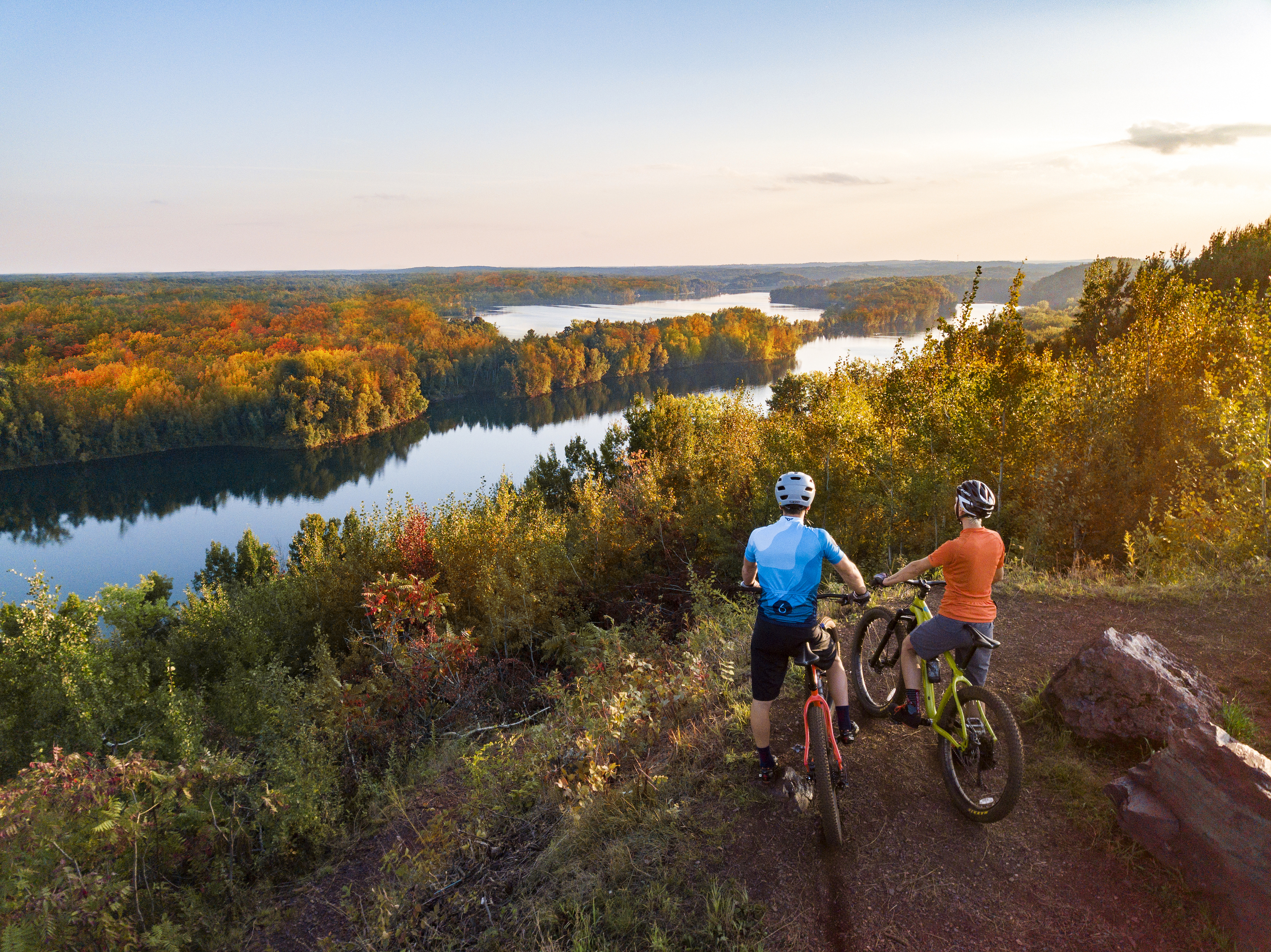
Two bicyclists soak up Cuyuna Country State Recreation Area / Micah Kvidt
Cuyuna Country State Recreation Area
Cuyuna has quickly become a top Midwest mountain biking destination, with over 50 miles of singletrack trails, ranging from easy for beginners to more technical for advanced riders. This area is accessible by public and private camping, with many sites ride-in, ride-out to access the trails, followed by a cool dip in a lake after.

The camper cabins at Lake Carlos State Park are ideal for a fall getaway / @_vartsana_
Lake Carlos State Park
Located near Alexandria, Lake Carlos State Park is one of Minnesota’s most popular state parks to camp in for a reason. Namely, beautiful lake and forest views, lake access, and historic park buildings.

Fall canoeing at St. Croix State Park / Christy Bruggenthies
St. Croix State Park
St. Croix State Park is Minnesota’s largest state park, at more than 34,000 acres, and includes three campgrounds. One area worth visiting by hiking, canoeing, or camping in this state park is the southern portion of the park where the Kettle River joins the St. Croix.
MINNEAPOLIS-ST. PAUL

Hike to a scenic overlook of the St. Croix River at Interstate State Park / Paul Vincent
Interstate State Park
A visit to Interstate State Park usually starts with the glacial potholes, and is followed by beautiful views of the river gorge. This state park has a variety of camping options for whatever your flavor.
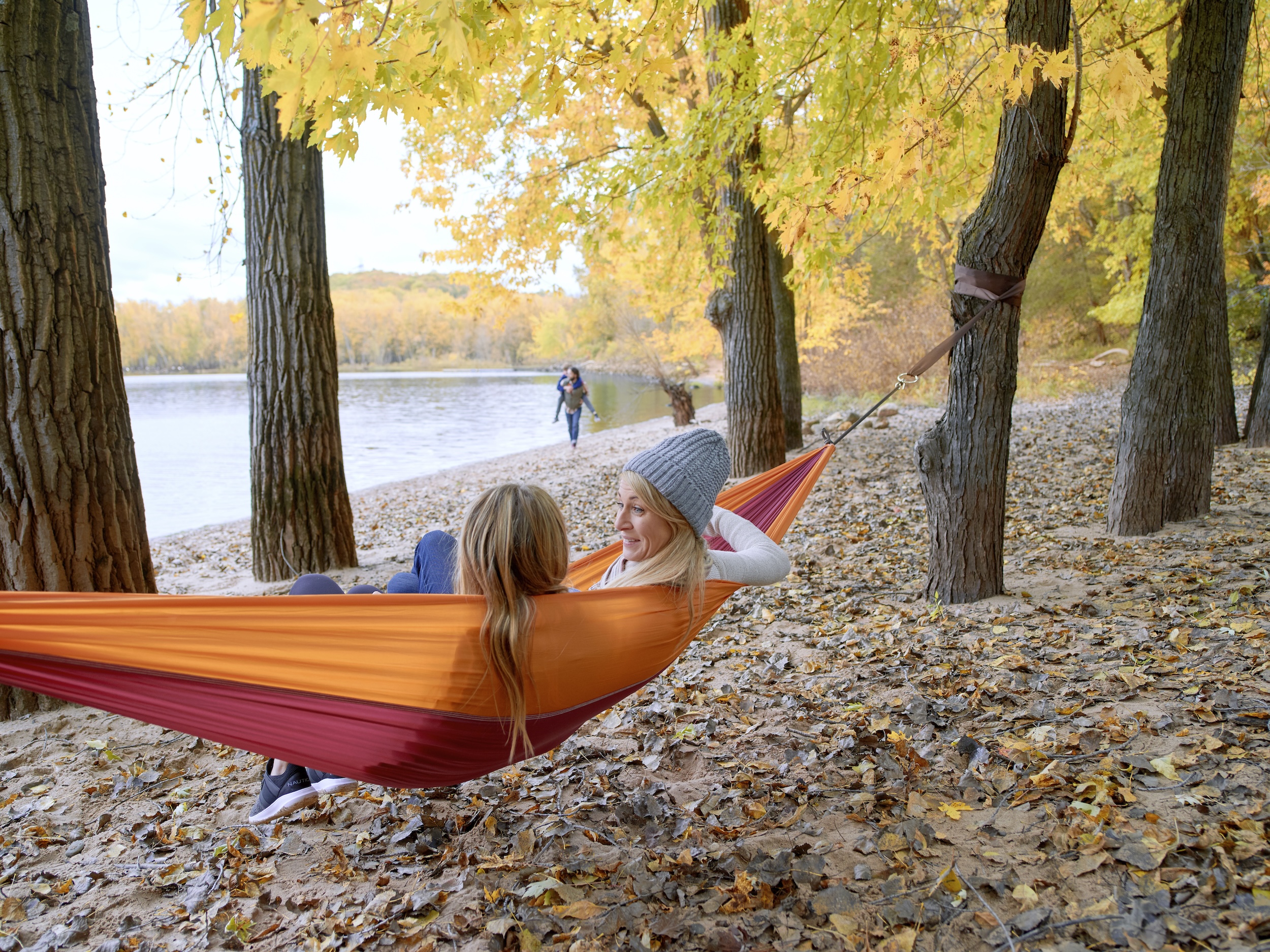
A family at Afton State Park in the fall / Credit: Paul Vincent
Afton State Park
If you live in the Twin Cities, Afton State Park might be the campsite that's closest to home. You can experience prairie and forest hiking, along with picnic spots and hiking within view of the St. Croix River.
SOUTHERN MINNESOTA

Scenic views of limestone bluffs await at Whitewater State Park / @angeladivinephoto
Whitewater State Park
Whitewater State Park is gorgeous in its own right, with seemingly endless amazing views from atop high cliffs or along waterways. One sneaky reason other than that you might want to camp here? It’s surprisingly light on mosquitos during height of the summer bug season.

Minneopa Falls / Pei Ketron
Minneopa State Park
At Minneopa State Park, you can see wild bison, beautiful waterfalls, and even historic mills. Camping options are abundant, and give you an opportunity to explore the vast array of sites in whatever way is comfortable for you.
Find out more about camping in Minnesota.


